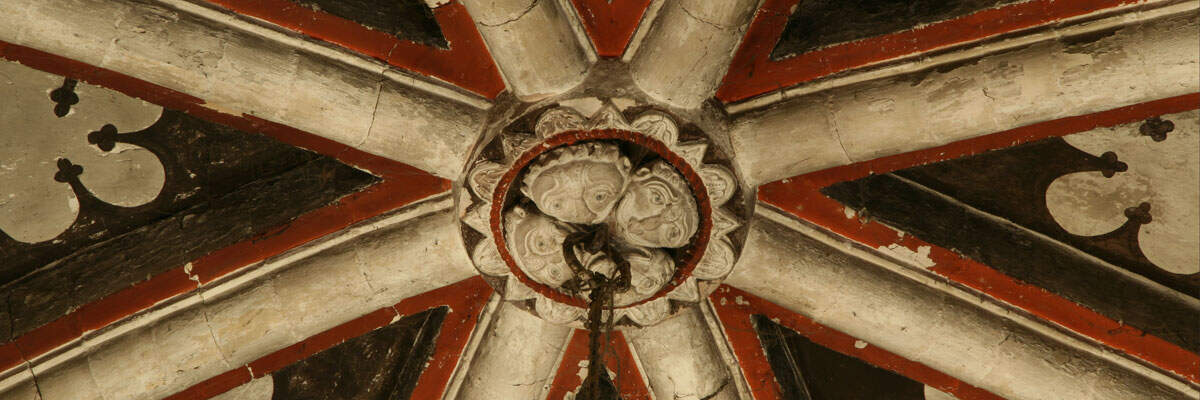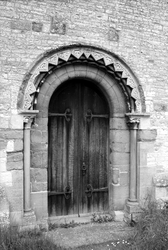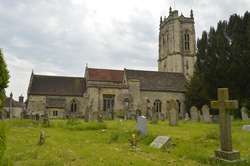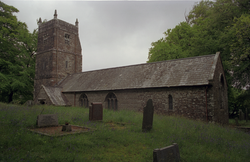
The Corpus of ROMANESQUE SCULPTURE in Britain & Ireland

St Gregory (medieval)
Parish church
Of Saxon origin and built of a Cotswold-type stone. Tower, aisled nave and chancel, the last rebuilt in the early 14thc. The nave upper walls have remnants of pre-Conquest windows and doors, completely blocked. The piers and responds of the nave arcades are basically 12thc.; the arches are pointed except for those at the W end, which are round-headed and terminate in a later W wall. Romanesque sculpture is also found in the doorway once in the N wall but now reset in the S.
Parish church
The village is located in the Blackmore Vale in north Dorset and sits above the river Stour. The present building consists of a chancel rebuilt c.1882, a 14thc N chapel; a 15thc S chapel; a nave with a late-14thc N aisle; a S aisle and a porch of c.1852, and a 15thc W tower.
The only Romanesque architectural sculpture is a pier, with capitals, that forms part of the N arcade. A 12thc font bowl also survives, now located in the S aisle.
Chapel, formerly parish church
The church was rebuilt in 1858 (tower in 1872); however, it preserves a Romanesque tympanum over the S door and a font. Both features have been dated to the first half of the 12thc.


